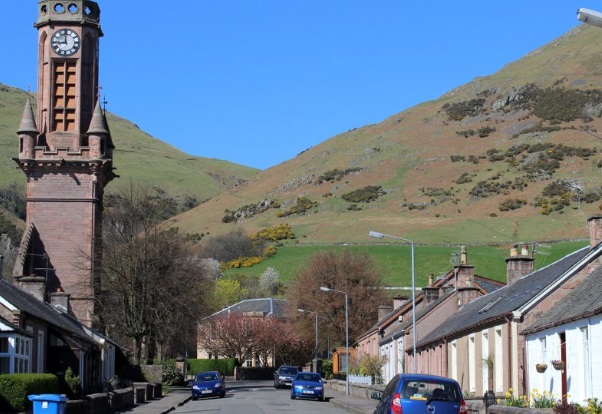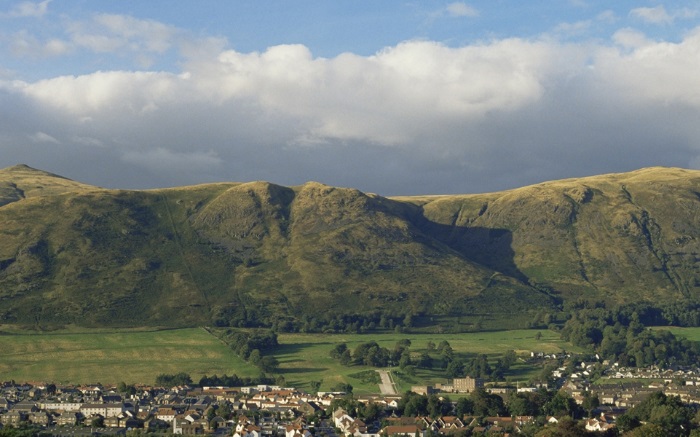Call Hillhead Joiners on 07710 096553 if you are looking for local, professional joiners and carpenters who cover the Tillicoultry area. We are a professional joinery and carpentry company who are 100% customer focussed. We have over 20 years of experience in the local joinery and carpentry industries, and are known for our professionalism and high-quality workmanship. We have established a strong reputation for exceptional customer satisfaction, we are very proud that our clients consistently praise our attention to detail, timely project completion, and excellent communication throughout the process.
View our customers Google Reviews below.
Here are just a few examples of our custom joinery and carpentry services we offer:
INTERNAL JOINERY WORKS
- New internal doors, facings and skirtings
- Wood wall panelling
- Media walls
- Timber sliding sash and case window restoration and refurbishment
- Real wood and laminate flooring supply and fitting service
- Bespoke wardrobe storage solutions
EXTERNAL JOINERY WORKS
- Glass balustrade system supply and fitting service
- Timber decking and composite decking supply and fitting service
- Garden Pergolas
- All types of timber fencing
- Wooden garden gates and driveway gates
- New doors and windows
The job doesn’t finish until our customer is 100% happy enough to sign off on the project. If you want quality work that is thorough and comes with a guarantee, you have found the perfect team. Hillhead Joiners Stirling are highly skilled and creative. Their joiners have all achieved Advanced Craft City and Guilds certification, ensuring customers receive top-quality workmanship.
JOINERS TILLICOULTRY
Here is a short history on Tillcoultry
Tillicoultry, a small town in Clackmannanshire, Scotland, has a rich and fascinating history that spans centuries. Nestled at the foot of the Ochil Hills, the town has evolved from a modest rural settlement into a thriving hub of industry, particularly during the 18th and 19th centuries when it became a center for textile manufacturing. Its story is shaped by geography, industry, and the resilience of its people.
Origins and Early History
The name “Tillicoultry” is believed to come from the Gaelic Tulach Cultraidh, meaning “the hill of the back-lands” or possibly “the hill of the cattle-fold.” The area’s fertile land and proximity to the River Devon made it an ideal location for early settlers who engaged in farming and small-scale trade.
While little evidence exists of prehistoric settlements, the nearby Ochil Hills have yielded archaeological discoveries, suggesting early human activity. The Romans may have passed through the area, as they established routes across central Scotland, but Tillicoultry itself does not feature prominently in Roman records. During medieval times, the land was primarily used for agriculture, and small settlements formed around farms and mills powered by the River Devon.
Tillicoultry and the Industrial Revolution
The biggest transformation in Tillicoultry’s history came with the advent of the Industrial Revolution. In the late 18th and early 19th centuries, the town became a major player in Scotland’s textile industry. The fast-flowing River Devon provided an excellent power source for watermills, which were used to drive the machinery in textile mills.
Tillicoultry became famous for producing high-quality woolen and worsted textiles. The first large-scale mill in the town was established in the late 18th century, and by the early 19th century, several mills had sprung up, producing blankets, tweeds, and other woolen goods. The textile industry attracted workers from surrounding areas, leading to rapid population growth.
The town developed infrastructure to support its expanding workforce. Rows of workers’ cottages were built to house mill employees, and local businesses flourished to meet the needs of the growing community. Schools, churches, and public buildings were established, further shaping Tillicoultry’s identity as a bustling mill town.
Decline of the Textile Industry and Modern Changes
Like many industrial towns in Scotland, Tillicoultry faced economic challenges in the late 19th and early 20th centuries. Competition from larger textile producers in Britain and abroad led to a decline in demand for locally made goods. Many mills struggled to remain profitable, and some eventually closed.
The decline of the textile industry led to economic hardship, and the town had to adapt. Some of the old mill buildings were repurposed for other industries, while others fell into disrepair. Over time, new industries emerged, though none matched the scale and significance of textile manufacturing.
Despite these changes, Tillicoultry remained a resilient community. Improved transport links, including the railway (which operated from the 19th century until the mid-20th century), helped keep the town connected to larger cities like Stirling and Edinburgh. Although the railway line eventually closed, roads and bus services continued to support local travel.
Tillicoultry in the 20th and 21st Centuries
In the second half of the 20th century, Tillicoultry underwent further transformation. The decline of heavy industry led to a shift toward a service-based economy. Many residents began commuting to larger towns and cities for work.
One of the most significant modern developments in Tillicoultry was the creation of the Sterling Mills Outlet Shopping Village. This retail center, which opened in the late 20th century, has become a popular shopping destination, drawing visitors from across central Scotland. It has helped to reinvigorate the local economy and provided employment opportunities.
Today, Tillicoultry is a thriving residential community with a mix of historical charm and modern amenities. Many of the old mill buildings have been converted into apartments and commercial spaces, preserving the town’s industrial heritage while adapting to contemporary needs.
Cultural and Natural Attractions
Tillicoultry’s location at the foot of the Ochil Hills makes it an attractive spot for outdoor enthusiasts. The Mill Glen, a scenic gorge near the town, offers walking trails that lead into the hills, providing stunning views and a glimpse of the area’s natural beauty. The town also boasts a strong sense of community, with local events, markets, and sports clubs contributing to its vibrant social life.
The Devon Way, a walking and cycling route that follows the old railway line, connects Tillicoultry to nearby towns and offers an opportunity to explore the region’s scenic landscapes.
From its humble beginnings as a farming settlement to its rise as a major textile center during the Industrial Revolution, Tillicoultry has experienced significant change over the centuries. Although the textile industry has faded, the town has adapted and evolved, maintaining a strong community spirit and embracing new economic opportunities. Today, Tillicoultry balances its rich industrial heritage with modern living, making it a unique and historically significant part of Clackmannanshire.
Call Hillhead Joiners on 07710 096553 if you are looking for local, professional joiners and carpenters who cover Tillicoultry and the surrounding urban and rural communities:
Stirling, Aberfoyle, Balfron, Bridge of Allan, Buchlyvie, Callander, Cambusbarron, Cambuskenneth, Causewayhead, Denny, Dollar, Doune, Dunblane, Falkirk, Gargunnock, Gartmore, Gleneagles, Kippen, Larbert, Menstrie, Stenhousemuir, Tillicoultry and all of Central Scotland.





